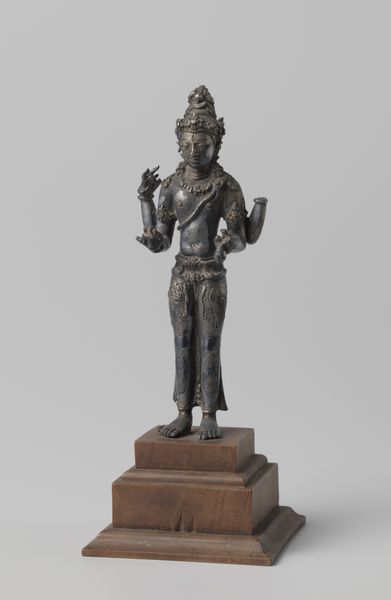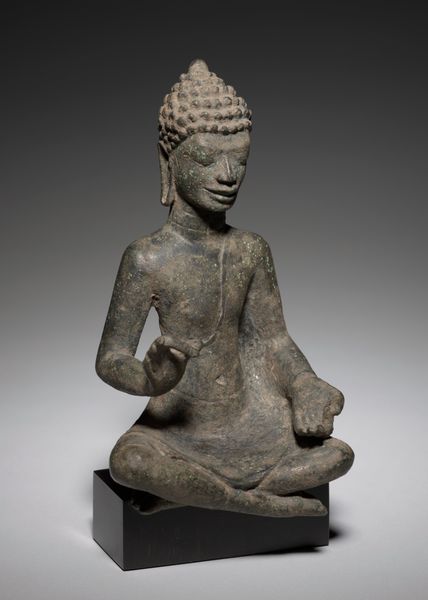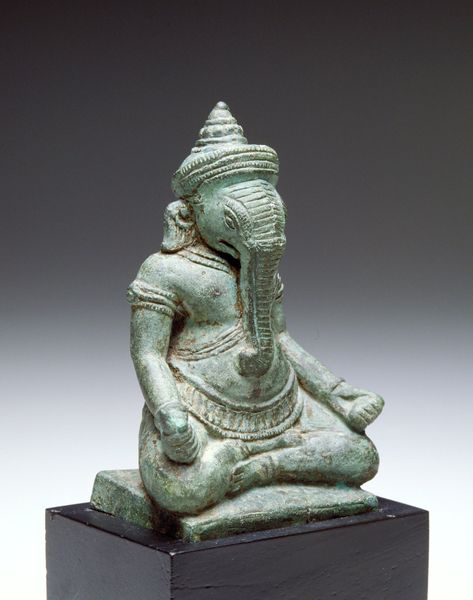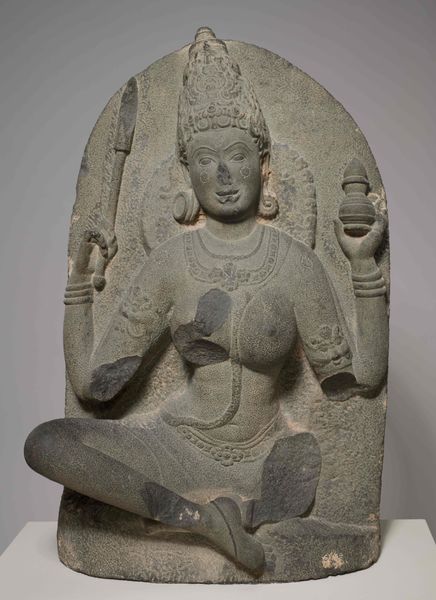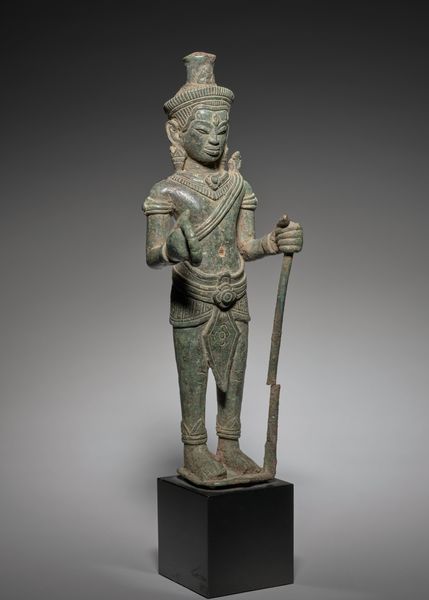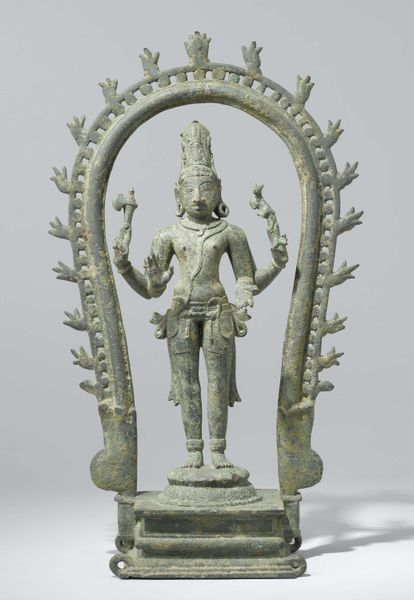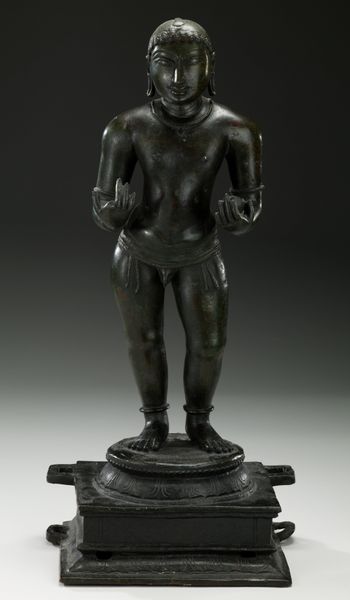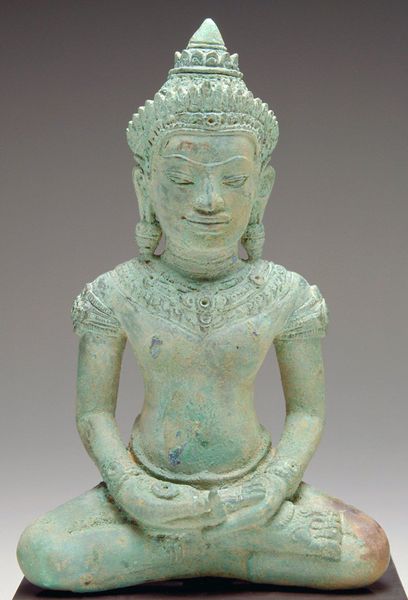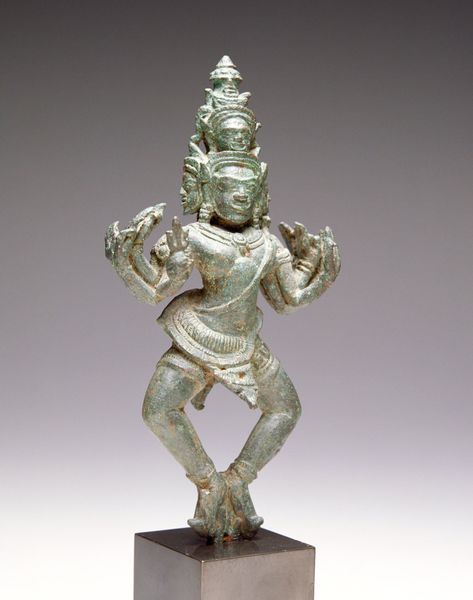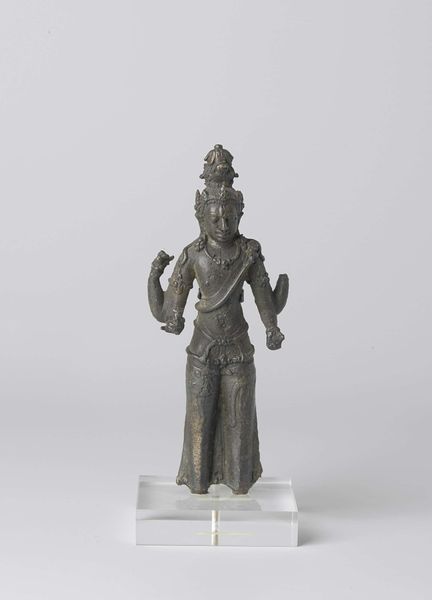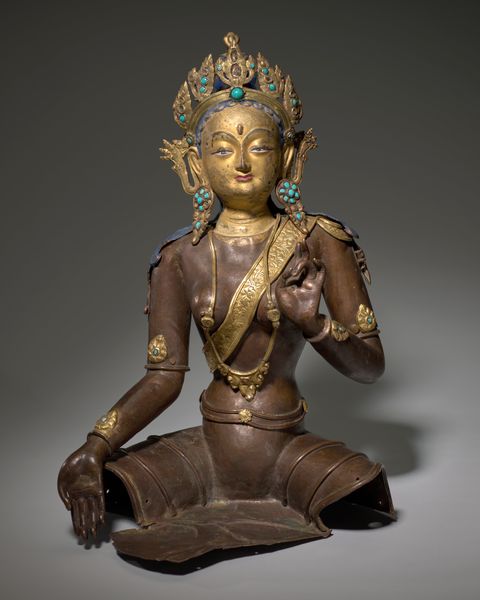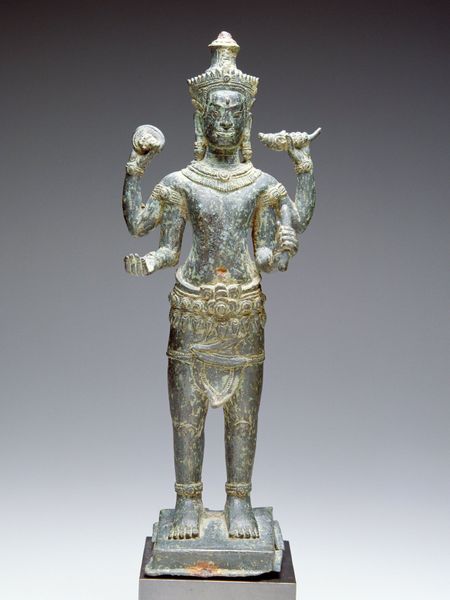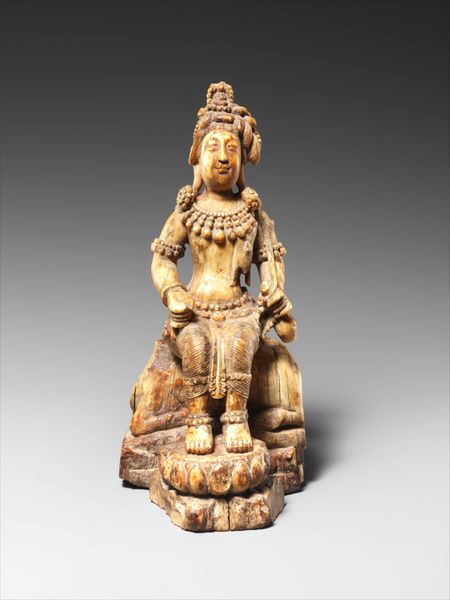
bronze, sculpture
#
portrait
#
sculpture
#
asian-art
#
bronze
#
figuration
#
ancient-mediterranean
#
sculpture
Dimensions: 27 3/4 x 11 x 9 3/8 in. (70.49 x 27.94 x 23.81 cm)
Copyright: Public Domain
This bronze sculpture of Devi Uma Parameshvari was anonymously crafted in India. Although we cannot know the exact date it was made, the sculpture is useful for understanding cultural, religious, and social conditions in India at the time. The iconography surrounding Devi Uma Parameshvari is complex, rich, and rooted in the Hindu religion. As Parameshvari, she is the supreme goddess, the ultimate power behind the universe. She represents not just divine power, but also ideal womanhood as the devoted wife. The sculpture’s slender form, the tilt of her head, and the sensuous curves of her body all emphasize her beauty and grace. What interests the historian is what the sculpture tells us about the ways the Hindu religion shaped social life. By studying Hindu religious texts, temple records, and related works of art, we can better understand the social role of the goddess and the expectations placed on women in Indian society. The sculpture is not just an object of religious devotion, but a cultural artifact that embodies and reflects the values of a specific time and place.
Comments
minneapolisinstituteofart almost 2 years ago
⋮
Devotees of the Great Goddess understand her as a personification of supreme feminine power. In Tamil Nadu, her iconography is relatively consistent, although she might be called by different names depending on the form of Shiva she accompanies. Her right arm is positioned to hold a lotus or blue lily, her left hand rests gracefully at her side, and her sensuous figure is accentuated by the triple-bend stance. An image of Uma must be present at all temple ceremonies for Shiva, or else the ritual is incomplete.
Join the conversation
Join millions of artists and users on Artera today and experience the ultimate creative platform.
